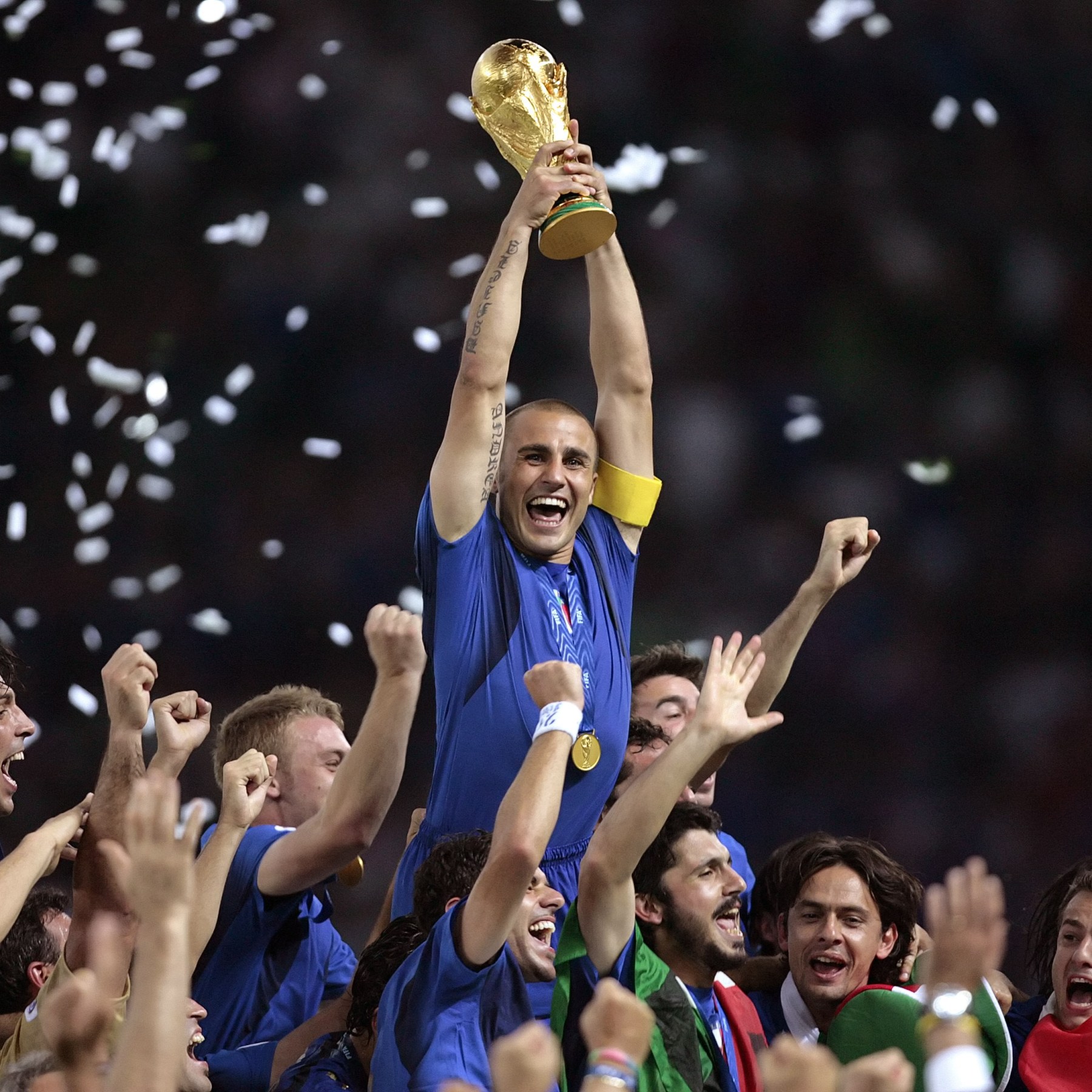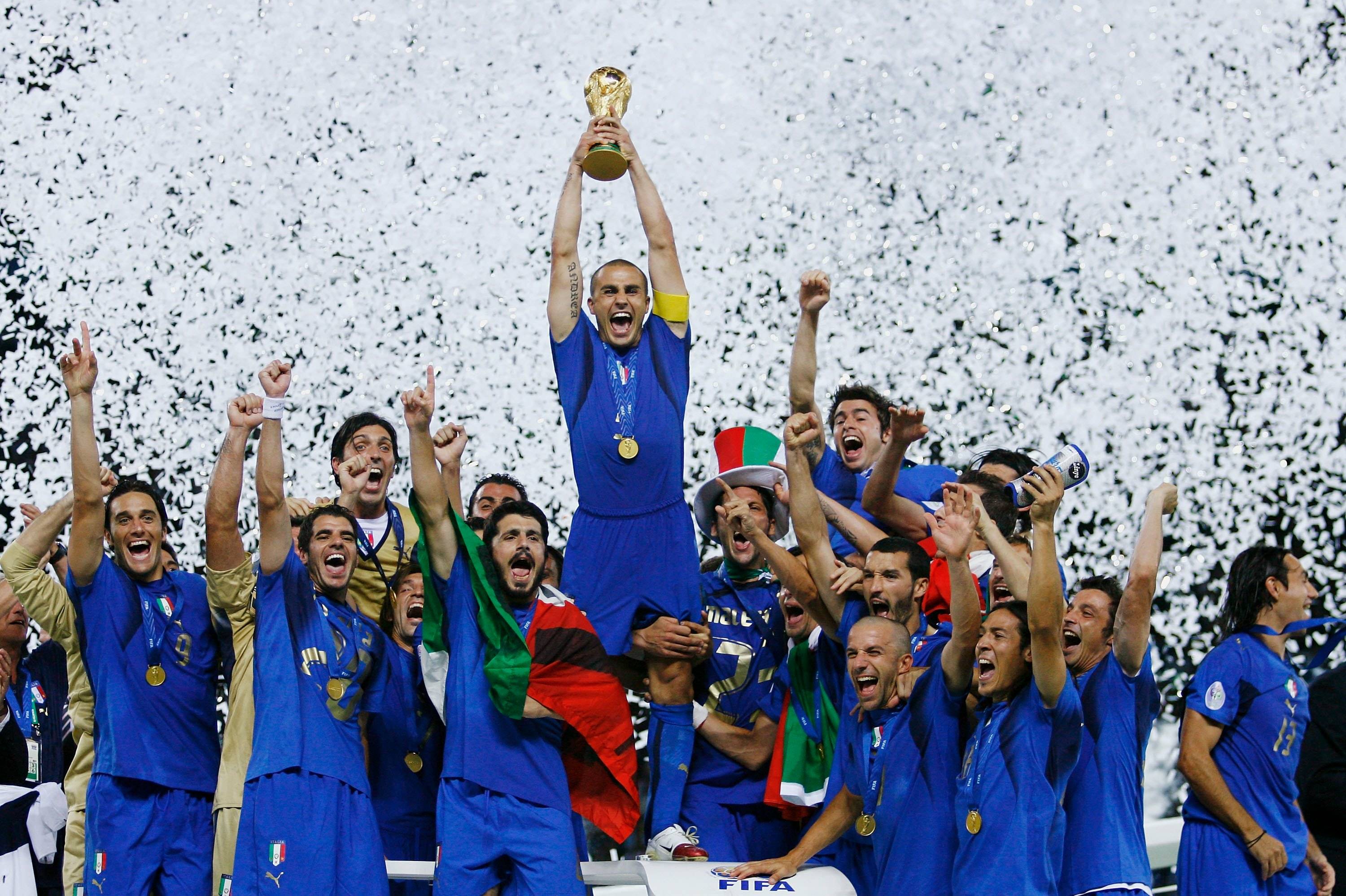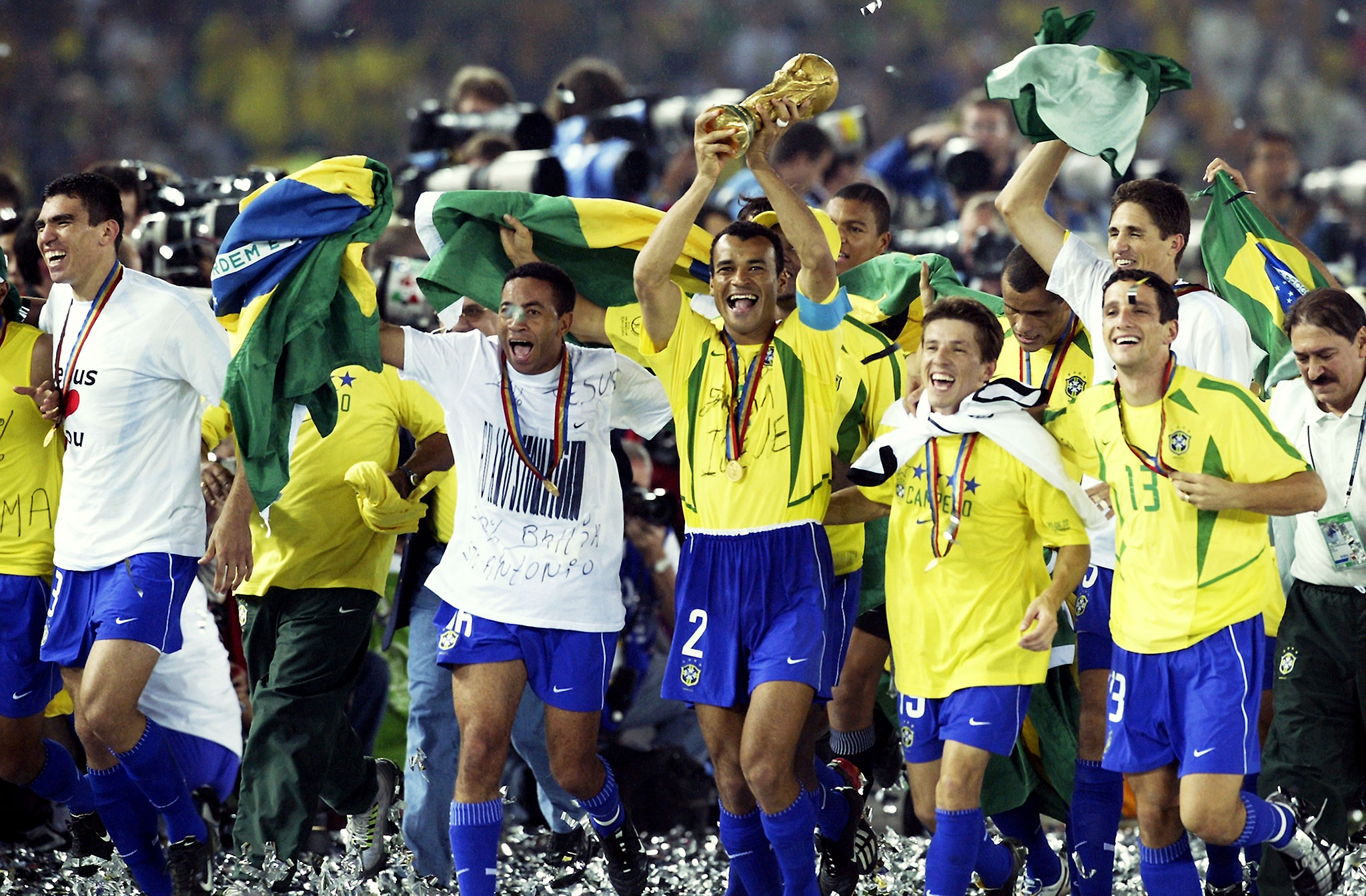World Cup winner 2006? That’s Italy! This wasn’t just a victory; it was a gripping saga of tactical brilliance, nail-biting matches, and penalty shootout drama. From the legendary Cannavaro’s defensive prowess to the clinical finishing of Grosso, Italy’s journey to glory in Germany was a masterclass in teamwork and resilience. Get ready to relive the excitement, the tension, and the ultimate triumph!
We’ll delve into the specifics of Italy’s squad, their strategic gameplay, and the pivotal moments that shaped their World Cup campaign. We’ll analyze the final showdown against France, a match etched in football history, and explore the lasting impact of this incredible victory on Italian football and national pride. Buckle up for a rollercoaster ride through one of the most memorable World Cup tournaments ever!
The Winning Team
Italy’s victory in the 2006 FIFA World Cup was a testament to their disciplined approach, tactical prowess, and unwavering team spirit. Their triumph wasn’t a flash in the pan; it was the culmination of years of building a strong squad and a cohesive playing style. This success was built on a foundation of experienced veterans guiding a talented younger generation.
Team Composition and Key Players
Italy’s 2006 squad boasted a blend of experience and youth, perfectly balanced to navigate the pressures of a World Cup campaign. The backbone of the team was its defense, famously dubbed “the impenetrable wall.” Gianluigi Buffon, the legendary goalkeeper, provided unwavering security between the posts. The defensive quartet of Fabio Cannavaro (captain), Marco Materazzi, Alessandro Nesta, and Gianluca Zambrotta formed a formidable barrier, frustrating opponents with their strength, positioning, and tactical awareness.
In midfield, Andrea Pirlo orchestrated play with his vision and passing range, dictating the tempo of the game. Genoa’s Gennaro Gattuso provided the tireless energy and defensive grit, while Francesco Totti and Simone Perrotta offered creativity and attacking impetus. Upfront, the strike partnership of Luca Toni and Alberto Gilardino proved potent, offering a blend of physicality and clinical finishing.
You also can investigate more thoroughly about world cup soccer venue to enhance your awareness in the field of world cup soccer venue.
Tactical Approach, World cup winner 2006
Marcello Lippi, Italy’s coach, employed a pragmatic 4-3-3 formation, often morphing into a 4-5-1 during defensive phases. This flexible system prioritized solid defense and controlled possession, launching counter-attacks when opportunities arose. The midfield trio of Pirlo, Gattuso, and Perrotta worked tirelessly, controlling the tempo, winning back possession, and initiating attacks. The emphasis on defensive solidity allowed Italy to absorb pressure and capitalize on set-pieces and counter-attacking opportunities, a strategy that proved highly effective throughout the tournament.
Significant Moments
Italy’s journey to victory was punctuated by several memorable moments. Their Round of 16 match against Australia saw a controversial penalty awarded to Italy, a decision that sparked debate but ultimately paved the way for their progression. The quarter-final clash against Ukraine saw a dominant display, with Italy winning 3-0. The semi-final against Germany was a tense affair, decided in a penalty shootout after a 2-2 draw.
The final against France was another nail-biter, ending 1-1 after extra time and decided by penalties, with Italy emerging victorious. These matches showcased Italy’s resilience, ability to perform under pressure, and their effectiveness in penalty shootouts.
Squad Statistics Comparison
This table compares Italy’s key statistics with other top teams in the 2006 World Cup. Note that these are simplified representations and more comprehensive datasets would be required for a complete statistical analysis.
| Team | Goals Scored | Goals Conceded | Possession % (approx.) |
|---|---|---|---|
| Italy | 12 | 2 | 48% |
| Germany | 14 | 4 | 52% |
| Brazil | 10 | 3 | 55% |
| France | 9 | 3 | 50% |
The Final Match: World Cup Winner 2006

The 2006 FIFA World Cup Final between Italy and France was a dramatic and fiercely contested affair, ultimately decided by a penalty shootout after a 1-1 draw. The match showcased contrasting styles of play, tactical battles, and moments of individual brilliance, culminating in a tense and unforgettable climax. This clash of titans highlighted the strength and determination of both teams, leaving an indelible mark on World Cup history.
The match was a tense battle from the first whistle. Italy, known for their defensive solidity and tactical discipline under Marcello Lippi, employed a pragmatic approach, focusing on containing France’s attacking prowess and capitalizing on counter-attacking opportunities. France, under Raymond Domenech, relied on their creative midfielders and the pace of their forwards, aiming to dominate possession and break down Italy’s defense through skillful passing and individual brilliance.
Zinedine Zidane, in what would be his final international match, was expected to orchestrate France’s attack.
Key Events and Goals
The match saw a relatively slow start, with both teams cautiously probing for weaknesses. However, the tension escalated significantly when Materazzi and Zidane clashed in the penalty area. The incident, which involved a headbutt from Zidane to Materazzi, resulted in a red card for the French captain. This was a pivotal moment, shifting the momentum of the game dramatically in Italy’s favor.
Before the red card, France had taken the lead through a penalty scored by Zidane himself, after a foul on Florent Malouda. Italy equalized in the second half through a penalty converted by Marco Materazzi after a handball by Marco Materazzi.
Playing Styles and Strategies
Italy’s strategy was built around a strong defense, midfield control, and opportunistic attacks. They effectively neutralized France’s creative midfielders, forcing them into long-range shots and limiting their ability to create clear-cut chances. France, on the other hand, aimed to dominate possession and create openings through intricate passing combinations. Zidane’s absence after his expulsion significantly disrupted their attacking rhythm.
Turning Points
The red card shown to Zidane is undoubtedly the most significant turning point. It left France a man down and demoralized, severely impacting their ability to control the game and create scoring opportunities. The awarding of the penalties to both teams also proved to be crucial moments that shaped the match’s outcome.
Timeline of Notable Events
- 7th minute: Zidane scores a penalty for France, giving them a 1-0 lead.
- 110th minute: Zidane is sent off for headbutting Materazzi.
- 110th minute: Materazzi scores a penalty for Italy, leveling the score at 1-1.
- Full-time: The match ends in a 1-1 draw, leading to a penalty shootout.
- Penalty Shootout: Italy wins the penalty shootout 5-3.
Italy’s Tournament Journey

Italy’s victory in the 2006 FIFA World Cup was a testament to their resilience, tactical prowess, and unwavering determination. Their journey wasn’t a smooth one; it was a rollercoaster ride of nail-biting matches, controversial moments, and ultimately, triumphant glory. This section details their path to victory, highlighting key moments and performances that shaped their destiny.
Group Stage Performance
Italy’s group stage campaign started with a hard-fought 1-1 draw against Ghana. A late goal from Andrea Pirlo salvaged a point after a spirited performance from the Ghanaians. Their second match saw a more comfortable 2-0 victory over the Czech Republic, thanks to goals from Marco Materazzi and Alberto Gilardino. The final group stage match against the United States proved to be a tense affair, ending in a 1-1 draw.
Despite not winning all their group games, Italy secured top spot in Group E, demonstrating their ability to grind out results even when not at their best.
Knockout Stage Matches
The knockout stages began with a challenging match against Australia. A controversial penalty awarded to Italy, converted by Francesco Totti, proved decisive in a 1-0 victory. The quarter-final pitted them against Ukraine, where Italy secured a 3-0 victory, showcasing their offensive capabilities with goals from Luca Toni (2) and Andrea Pirlo. The semi-final against Germany was a tense encounter, ending 2-0 to Italy, after a strong performance in defense and clinical finishing.
The final match against France is discussed elsewhere.
Challenges Faced and Overcoming Them
Italy faced several challenges throughout the tournament. The group stage was not entirely dominant, and several matches were tight affairs requiring grit and determination. The team’s defensive solidity, however, consistently bailed them out. Furthermore, controversies, like the penalty against Australia and other refereeing decisions, could have easily derailed their momentum, but the team remained focused on the task at hand.
The team’s resilience and ability to adapt to different game situations were crucial to their success.
Key Player Performances
Several players were instrumental in Italy’s success. Gianluigi Buffon’s goalkeeping was consistently exceptional, making crucial saves at critical moments. Fabio Cannavaro’s leadership and defensive prowess anchored the backline. Andrea Pirlo’s creativity and set-piece expertise were vital in midfield, and the goalscoring contributions of Luca Toni and Alberto Gilardino proved invaluable. The team’s collective effort was undeniable, but these players stood out as key contributors to their World Cup triumph.
Italy’s Match Results Summary
| Match | Opponent | Result | Goalscorers |
|---|---|---|---|
| Group E | Ghana | 1-1 | Pirlo |
| Group E | Czech Republic | 2-0 | Materazzi, Gilardino |
| Group E | United States | 1-1 | Gilardino |
| Round of 16 | Australia | 1-0 | Totti (pen) |
| Quarter-final | Ukraine | 3-0 | Toni (2), Pirlo |
| Semi-final | Germany | 2-0 | Materazzi, Del Piero |
Memorable Moments and Images
The 2006 FIFA World Cup victory for Italy was a culmination of thrilling matches, nail-biting moments, and unwavering determination. Beyond the final score, certain moments and images indelibly etched themselves into the memories of fans worldwide, solidifying Italy’s triumph as a truly iconic achievement. These moments transcended the game itself, becoming symbols of national pride and sporting excellence.
Iconic Moments of Italy’s 2006 World Cup Win
Three moments stand out as particularly significant in Italy’s victorious journey. First, Fabio Grosso’s extra-time goal against Germany in the semi-final was a moment of pure drama. The tension was palpable; the game had been a grueling battle, and the score was tied 1-1. Then, Grosso, a relatively unheralded player, weaved through the German defense with a dazzling run before slotting the ball past Jens Lehmann.
The sheer audacity and skill displayed, coupled with the high stakes, made this a truly unforgettable moment. Secondly, Andrea Pirlo’s masterful performance throughout the tournament, particularly his penalty in the quarter-final against Australia, highlighted his exceptional talent and composure under pressure. His cool and precise penalty, executed with a deceptive nonchalance, was a masterclass in penalty-taking and a pivotal moment in securing Italy’s passage to the next round.
Finally, the penalty shootout victory against France in the final itself was a heart-stopping climax. The sheer tension and drama of the shootout, culminating in Fabio Grosso’s decisive penalty and David Trezeguet’s miss, cemented Italy’s victory and provided a dramatic end to a thrilling tournament.
Atmosphere and Emotions of the Final Match and Victory Celebrations
The atmosphere surrounding the final match was electric. The Stade Olympique de Berlin was a cauldron of noise, a sea of passionate Italian and French supporters. The tension was palpable throughout the 90 minutes and extra time, with every tackle, every pass, every near miss met with gasps and roars from the crowd. The penalty shootout was a heart-stopping experience for everyone watching, a rollercoaster of emotions that swung wildly between hope and despair.
Italy’s victory unleashed a torrent of emotion; joyous scenes of celebration erupted across Italy and amongst the Italian supporters in Berlin. The scenes of jubilation, the outpouring of national pride, and the collective relief after a tense match, captured the magnitude of Italy’s achievement.
Significant Images Capturing Italy’s Triumph
Several images encapsulate the essence of Italy’s 2006 World Cup triumph. First, the image of Fabio Grosso celebrating his extra-time goal against Germany perfectly captures the raw emotion and joy of a crucial moment. His ecstatic expression, arms raised in triumph, amidst a flurry of teammates, reflects the relief and exhilaration of a hard-fought victory. Second, the image of Marco Materazzi lifting the World Cup trophy embodies the culmination of Italy’s journey.
His face, a mixture of pride and exhaustion, reflects the immense effort and dedication required to reach the pinnacle of world football. Finally, the image of the Italian players celebrating together after the final whistle, a mass of embracing figures in a joyous tangle, perfectly captures the team spirit and camaraderie that underpinned their success. The shared joy, the collective accomplishment, and the genuine bonds between the players are palpable in this image.
Italy’s 2006 World Cup victory wasn’t just about winning a trophy; it was a testament to unwavering determination, tactical mastery, and the power of national unity. The echoes of that triumph continue to inspire Italian football, reminding us that even against seemingly insurmountable odds, with the right combination of skill, strategy, and heart, victory is within reach. So raise a glass (of Italian wine, naturally!) to the Azzurri’s unforgettable journey to glory!



